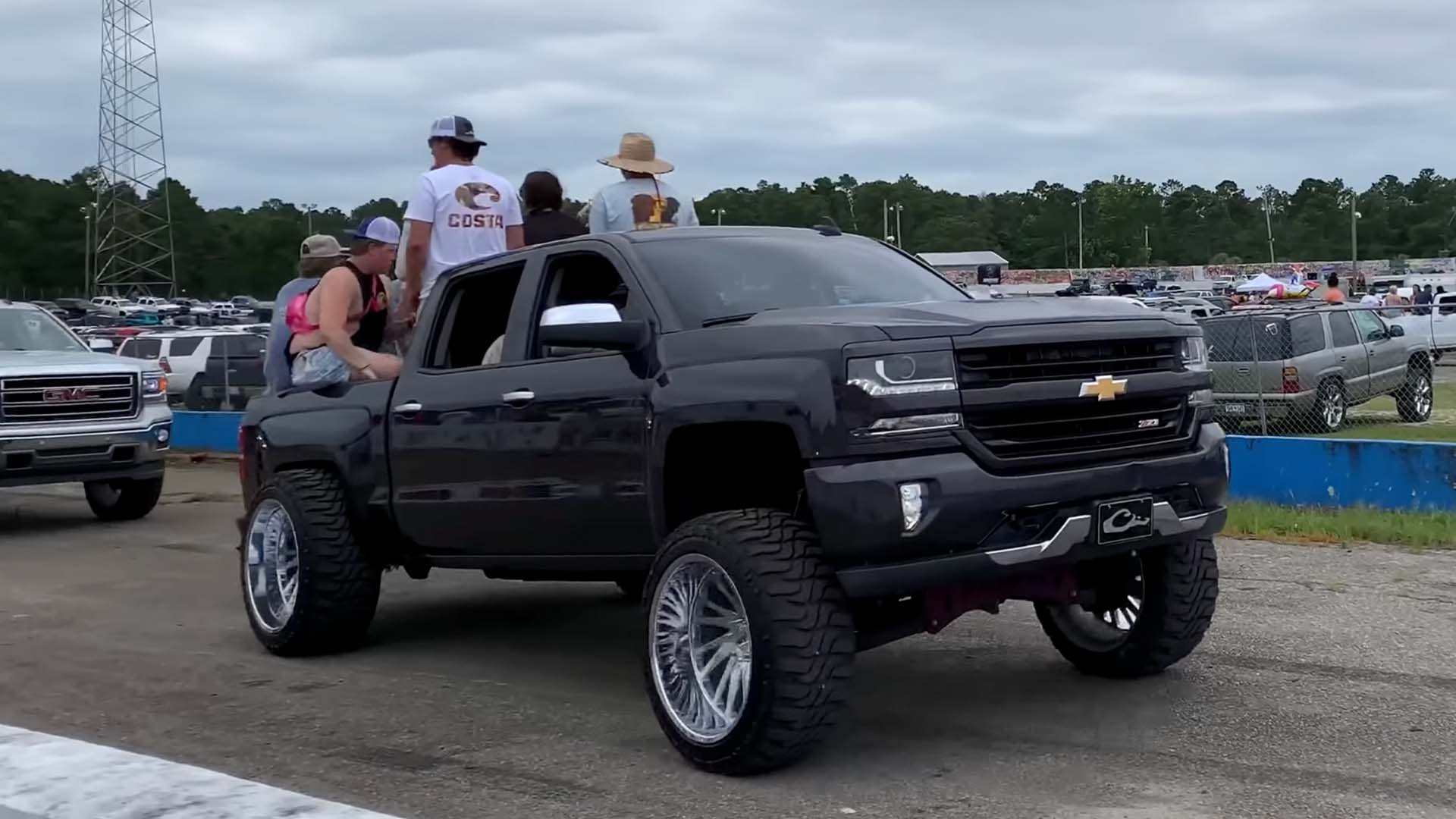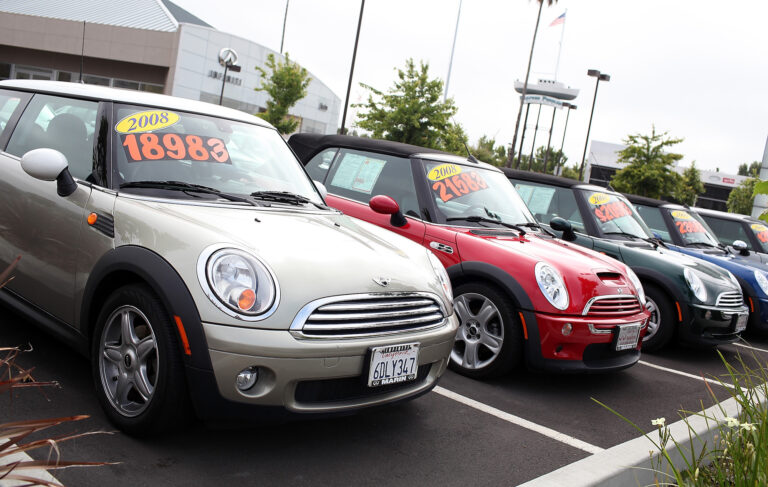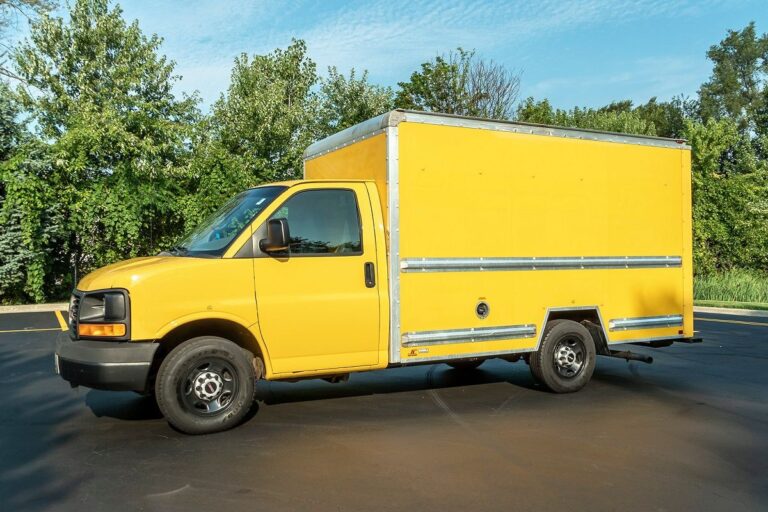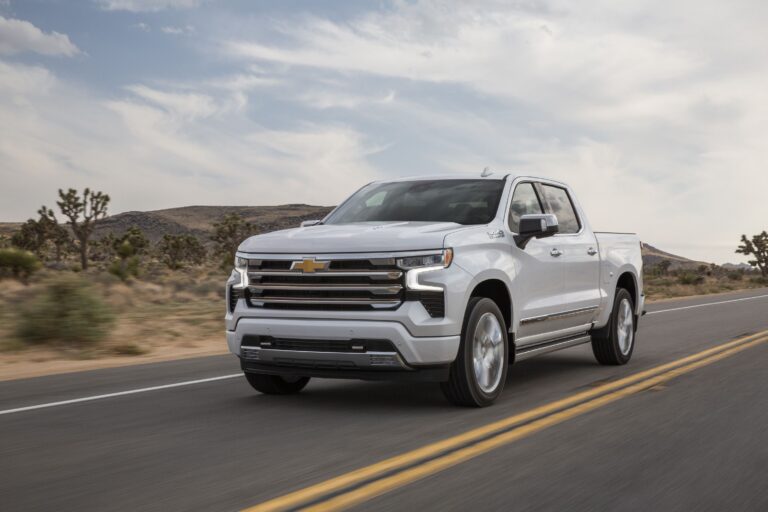Squatted Trucks For Sale: Navigating the Market for a Unique Stance
Squatted Trucks For Sale: Navigating the Market for a Unique Stance cars.truckstrend.com
In the vibrant and ever-evolving world of automotive customization, few trends have generated as much buzz, adoration, and controversy as the "squatted truck." Also known by terms like the "Carolina Squat," "California Lean," or simply "squat," this distinctive modification has become a defining aesthetic for a segment of truck enthusiasts. For those captivated by its unique stance and bold presence, the search for "squatted trucks for sale" presents an exciting, albeit complex, journey.
This comprehensive guide aims to illuminate every facet of acquiring a squatted truck, from understanding what defines this look to navigating the legal landscape, assessing safety concerns, and making an informed purchase. Whether you’re a seasoned customizer or new to the scene, preparing to buy a squatted truck requires a thorough understanding of its implications.
Squatted Trucks For Sale: Navigating the Market for a Unique Stance
What Exactly is a Squatted Truck?
At its core, a squatted truck is a vehicle, typically a pickup truck or SUV, that has been modified to have its front end significantly higher than its rear end. This is achieved by installing a lift kit on the front suspension, often ranging from 3 to 10 inches or more, while simultaneously lowering the rear suspension, sometimes by removing blocks or installing shorter shackles. The result is a truck that appears to be "squatting" or "leaning back," as if it’s perpetually accelerating or carrying an extremely heavy load in its bed.
The origins of this trend are debated, with some attributing it to off-road racing (where a high front end could improve approach angles for obstacles) and others purely to aesthetic preference, particularly within the truck show and custom scene. Regardless of its genesis, the look has garnered a dedicated following, drawn to its aggressive posture and undeniable head-turning ability.
The Allure and Controversy: Why Buy a Squatted Truck?
The decision to seek out a squatted truck for sale is often driven by a desire for a vehicle that stands out from the crowd. These trucks are not for the faint of heart; they make a statement.
The Allure:
- Unique Aesthetic: For many, the squatted look is simply cool. It’s an aggressive, custom stance that distinguishes the truck from stock vehicles and even other lifted trucks.
- Ready-to-Go Customization: Buying a pre-squatted truck means the significant and often costly modification work has already been done. This can save time, effort, and potentially money compared to buying a stock truck and custom building it yourself.
- Community and Culture: Owning a squatted truck often means becoming part of a passionate subculture of enthusiasts who appreciate this specific style.

The Controversy and Potential Downsides:
However, the squatted truck trend is not without its significant detractors and practical challenges. Understanding these is paramount before making a purchase.
- Legality Issues: Perhaps the biggest hurdle is the increasing number of states and municipalities that have outlawed or severely restricted squatted trucks due to safety concerns. Laws vary widely, but many now mandate that the front bumper cannot be more than a certain number of inches higher than the rear bumper.
- Safety Concerns:
- Visibility: The upward tilt of the front end can significantly impair the driver’s forward visibility, especially close to the vehicle, making it harder to see pedestrians, small vehicles, or obstacles.
- Headlight Aim: The extreme upward angle can cause headlights to point upwards into oncoming traffic, creating a blinding glare for other drivers and reducing the effective illumination of the road ahead for the driver of the squatted truck.
- Braking and Handling: The altered weight distribution and suspension geometry can negatively impact braking performance, stability, and overall handling, especially at higher speeds or during emergency maneuvers.
- Tire Wear: Uneven tire wear due to improper alignment is common.
- Insurance Implications: Insuring a heavily modified vehicle can be more complex. Some insurers may refuse coverage, or premiums might be significantly higher. Claims could also be denied if the modification is deemed unsafe or illegal.
- Wear and Tear: The extreme angles placed on suspension and steering components can accelerate wear and tear, leading to more frequent maintenance and repair costs.
- Resale Value: While appealing to a niche market, squatted trucks typically have a smaller pool of potential buyers, which can depress resale value and make them harder to sell later on.
Navigating the Market: Where to Find Squatted Trucks For Sale
Once you’ve weighed the pros and cons and decided to proceed, knowing where to look is key.
- Online Marketplaces: Platforms like Facebook Marketplace, Craigslist, and eBay Motors are prime hunting grounds. Use specific search terms like "squatted truck," "Carolina squat," "lifted front lowered rear," or "squatted [make/model]."
- Dedicated Forums and Social Media Groups: Many truck enthusiast forums and Facebook groups are dedicated to specific truck types or custom styles. These communities often have "for sale" sections.
- Specialty Dealerships/Custom Shops: Some dealerships or custom shops that specialize in lifted or modified trucks may occasionally have squatted trucks in their inventory, either as trade-ins or custom builds for resale.
- Auto Auctions: Public and private auto auctions can sometimes yield unique finds, though thorough inspection is even more critical here.
- Word-of-Mouth: Networking within the local truck enthusiast community can lead to private sales not advertised elsewhere.
When browsing listings, pay close attention to the details provided. High-quality photos, detailed descriptions of modifications, maintenance records, and clear information about the truck’s history are all good signs. Be wary of listings with vague descriptions, poor photos, or an unwillingness to provide more information.
Key Considerations Before You Buy: A Buyer’s Guide
Purchasing a squatted truck requires diligence. Here’s a practical guide to ensure you make the best decision:
- Legality Check (Crucial!): This cannot be stressed enough. Before you even look at a truck, research the specific laws regarding vehicle height differences in your state and any states you plan to drive through regularly. Many states, including North Carolina, South Carolina, Virginia, and others, have enacted "squat bans" or height differential limits. Ignorance of the law is not an excuse, and violations can lead to fines, citations, and even vehicle impoundment.
- Professional Pre-Purchase Inspection (PPI): Always, always, always get a PPI from an independent, trusted mechanic who is knowledgeable about modified vehicles. They can identify potential issues with:
- Suspension Components: Look for excessive wear on ball joints, tie rods, control arm bushings, shocks, and springs due to the altered geometry.
- Alignment: Improper alignment can lead to dangerous handling and premature tire wear. Ask for a recent alignment report.
- Brakes: Ensure the braking system is in top condition, as the altered stance can affect its performance.
- Drivetrain: Inspect universal joints, CV joints, and differential angles for stress or damage from the lift.
- Frame/Chassis: Check for any signs of cracks, welds, or damage from extreme use or improper modification.
- Test Drive Thoroughly: Don’t just drive it around the block. Take it on highways, over bumps, and through turns. Pay attention to:
- Steering: Does it feel loose, vague, or overly stiff? Does it pull to one side?
- Braking: Does it stop straight and predictably? Is there excessive nose dive or instability?
- Visibility: Can you see adequately ahead, especially close to the front bumper?
- Noise: Listen for unusual clunks, squeaks, or groans from the suspension or drivetrain.
- Insurance Verification: Contact your insurance provider before purchasing. Explain the modifications and confirm they will cover the vehicle. Get it in writing if possible. Some companies may not insure vehicles that violate state laws.
- Cost of Ownership: Be realistic about ongoing costs. Squatted trucks can consume more fuel due to increased drag and often require more frequent and specialized maintenance. Factor in potential de-modification costs if you ever need to revert it to a legal or more conventional stance.
- Understand the Modification: Ask the seller about the specific lift and lowering components used. Were they professionally installed? Are there records?
- Check for Other Modifications: Squatted trucks often come with other modifications like custom wheels, tires, exhaust systems, or engine tunes. These can add value but also introduce potential issues if not done correctly.
Types of Squatted Trucks and Common Models
While the core concept is the same, squatted trucks can vary in the degree of "squat" and the models used:
- Mild Squat: A more subtle difference between front and rear height, often achieved with a smaller front lift and minor rear lowering.
- Extreme Squat: A very pronounced difference, with the front end towering over the rear, typically involving significant front lift kits and aggressive rear lowering.
Common truck models that are frequently squatted include:
- Chevrolet Silverado/GMC Sierra: Popular due to their robust aftermarket support.
- Ford F-Series (F-150, F-250): Another ubiquitous platform for customization.
- Ram 1500/2500: Known for their strong stance and appeal to customizers.
- Older Body Style Trucks: Many enthusiasts prefer older models (e.g., GMT800 Silverados/Sierras) for their simpler mechanics and affordability.
The Price of Stance: What to Expect
The price of a squatted truck for sale can vary wildly depending on several factors. It’s not just the truck’s inherent value but also the quality and extent of the modifications.
- Truck Base Value: Year, make, model, mileage, engine, trim level, and overall condition of the original truck.
- Quality of Squat Modification: Professionally installed, high-quality lift and lowering components will command a higher price than a DIY job with cheap parts.
- Additional Modifications: Custom wheels and tires (often a significant expense), upgraded audio, engine performance mods, or interior customizations will increase the price.
- Market Demand & Legality: In areas where squatted trucks are still legal and popular, prices might be higher. Conversely, in areas with bans, prices could be depressed, or the trucks might be sold with the understanding they need to be de-modified.
- Seller Motivation: Private sellers may be more flexible on price than dealerships.
Here’s an estimated price range for squatted trucks, assuming they are in good overall condition for their age:
| Truck Type & Condition | Modifications Level | Estimated Price Range (USD) | Notes |
|---|
Squatted Trucks For Sale: A Comprehensive Guide to the Controversial Stance
The automotive landscape is constantly shifting, driven by evolving tastes, technological advancements, and the vibrant culture of customization. Among the myriad trends that have emerged, the "squatted truck" stands out as particularly distinctive and, in recent years, highly controversial. If you’re encountering the term "Squatted Trucks For Sale" and are curious, or perhaps already captivated by this unique aesthetic, this detailed article is your essential guide to understanding, evaluating, and potentially acquiring one of these eye-catching vehicles.
An Engaging Introduction: Defining the Squatted Phenomenon
At its core, a squatted truck—often referred to as having the "Carolina Squat," "California Lean," or "Tennessee Tilt"—is a pickup truck or SUV modified to sit with its front end significantly higher than its rear. This distinctive stance is achieved by installing a substantial lift kit on the front suspension, sometimes ranging from 3 to 10 inches or more, while simultaneously lowering the rear suspension, often by removing factory blocks, installing shorter shackles, or even custom fabrication. The result is a vehicle that appears to be "squatting" or "raked back," creating an aggressive and unmistakable profile that turns heads on the road.
The prevalence of squatted trucks has surged, especially in the Southern United States, becoming a hallmark of a specific segment of truck culture. For enthusiasts, it’s a statement of individuality, a bold aesthetic choice that sets their vehicle apart. For others, it’s a source of concern, raising questions about safety and legality. This guide will delve into what makes these trucks unique, the benefits and challenges of owning one, and crucial advice for anyone considering a "Squatted Trucks For Sale" listing.
What Exactly is a Squatted Truck? Deconstructing the Stance
To fully appreciate (or critique) a squatted truck, it’s important to understand the mechanical alterations involved. Unlike a traditional lifted truck that aims for uniform ground clearance or a "level" stance, the squat intentionally creates an uneven ride height.
The modification typically involves:
- Front Lift Kit: This is the primary component responsible for the elevated front end. Common methods include coil spring spacers, strut extensions, taller coil springs, or full suspension lift kits that replace control arms, knuckles, and other components. The degree of lift varies, leading to mild or extreme squat.
- Rear Lowering: To achieve the "squatted" effect, the rear of the truck is lowered relative to the front. This can involve removing factory lift blocks from above the leaf springs, installing shorter or "drop" shackles, or in more extreme cases, custom leaf spring setups or even air suspension systems.
- Larger Wheels and Tires: While not exclusive to squatted trucks, larger diameter wheels and aggressive, often wide, tires are frequently paired with the squat modification to complete the custom look.
The intended purpose of this modification is primarily aesthetic. While some proponents might cite improved approach angles for off-roading (a high front end allows the front tires to clear obstacles more easily), this practical benefit is often overshadowed by the significant drawbacks in other areas of vehicle dynamics. The look itself, however, is undeniably attention-grabbing and has cultivated a devoted following.
The Allure and Controversy: Why Consider Squatted Trucks For Sale?
The decision to purchase a squatted truck is rarely purely practical; it’s often driven by a desire for a unique identity on the road.
The Allure for Buyers:
- Distinctive Aesthetic: The primary draw is the visual impact. A squatted truck stands out dramatically from stock vehicles and even traditionally lifted trucks. It’s a statement piece.
- Ready-Made Customization: For buyers who appreciate the look but lack the time, tools, or expertise to perform such extensive modifications themselves, buying a pre-squatted truck offers immediate gratification. The significant investment in parts and labor has already been made.
- Potential Cost Savings (vs. DIY): While the initial purchase price might be higher than a stock truck, it can sometimes be less expensive than buying a stock truck and then paying for all the necessary lift, lowering, and wheel/tire upgrades individually.
- Joining a Subculture: For many, owning a squatted truck means becoming part of a passionate community of enthusiasts who share similar tastes and enjoy showcasing their unique vehicles.
The Controversy and Practical Challenges:
Despite the allure, the widespread adoption of the squat has also sparked significant debate and legal action, largely due to legitimate safety concerns. Understanding these challenges is crucial for any potential buyer.
- Legality Issues: This is the most pressing concern. Numerous states, particularly in the Southeast where the trend originated, have enacted laws (often called "squat bans" or "Carolina Squat laws") that prohibit vehicles from having a significant height difference between the front and rear bumpers. These laws typically define a maximum allowable difference (e.g., 3 to 4 inches). Driving a truck that violates these laws can lead to hefty fines, citations, and in some cases, the vehicle being deemed unsafe and impounded.
- Safety Concerns:
- Visibility Impairment: The upward tilt of the front end significantly reduces the driver’s ability to see objects directly in front of the truck, especially small cars, pedestrians, or obstacles close to the bumper. This creates dangerous blind spots.
- Headlight Glare: Headlights, designed to illuminate the road ahead, are angled upwards, causing severe glare for oncoming drivers and reducing the effective illumination of the road for the squatted truck’s driver.
- Braking and Handling Degradation: The altered weight distribution, with more weight shifted towards the rear, can negatively impact braking efficiency, potentially leading to longer stopping distances. Handling, especially at highway speeds or during emergency maneuvers, can become unpredictable and less stable.
- Accelerated Wear and Tear: The extreme angles imposed on suspension components (ball joints, tie rods, control arm bushings, universal joints) can lead to premature wear and failure, increasing maintenance costs.
- Tire Wear: Improper alignment resulting from the modifications often leads to uneven and accelerated tire wear.
- Insurance Implications: Many insurance companies view heavily modified vehicles, especially those with safety concerns, as higher risk. It can be challenging to find comprehensive coverage, and premiums may be significantly higher. Some policies might even be voided if the vehicle is found to be non-compliant with state laws.
- Resale Value Challenges: While desirable to a niche market, the legal restrictions and safety concerns can severely limit the pool of potential buyers, making it much harder to sell a squatted truck in the future, often at a significant loss.
Navigating the Market: Where to Find Squatted Trucks For Sale
If you’ve weighed the pros and cons and are still set on finding a squatted truck, knowing where to look is your next step.
- Online Marketplaces: Platforms like Facebook Marketplace, Craigslist, and eBay Motors are excellent starting points. Use specific search terms such as "squatted truck," "Carolina squat," "lifted front lowered rear," or "squatted [specific truck model, e.g., Silverado, F-150]." Be prepared to filter through many listings, as quality and legality vary widely.
- Dedicated Forums and Social Media Groups: Many truck enthusiast communities, especially on Facebook and specialized forums, have "for sale" sections where members list their customized vehicles. These groups often cater specifically to the squatted truck aesthetic.
- Specialty Dealerships and Custom Shops: Some dealerships that specialize in custom or lifted trucks might occasionally have squatted trucks in their inventory, either as trade-ins or vehicles they’ve customized for resale. Customization shops might also have customer builds for sale.
- Auto Auctions: While less common, public or private auto auctions can sometimes feature unique custom vehicles, including squatted trucks. However, inspecting these vehicles thoroughly before bidding is even more critical.
- Word-of-Mouth: Networking within local car and truck shows or enthusiast gatherings can lead to private sales not advertised online.
When reviewing listings, prioritize those with high-quality, comprehensive photos from various angles. Detailed descriptions of the modifications, maintenance history, and clear communication from the seller are positive indicators. Be cautious of listings with vague information, poor images, or sellers unwilling to provide further details or allow inspections.
Key Considerations Before You Buy: A Buyer’s Guide
Purchasing a squatted truck is a significant investment with unique challenges. Follow this practical advice to make an informed decision:
- Legality is Paramount: Before you even look at a specific truck, research the exact laws in your state and any states you plan to frequently drive through. These laws are constantly evolving, so ensure you have the most current information. A truck that is legal in one state might be illegal the moment it crosses a border.
- Mandatory Pre-Purchase Inspection (PPI): Do NOT skip this step. Have an independent, qualified mechanic who is experienced with modified vehicles perform a thorough inspection. They should pay particular attention to:
- Suspension Components: Check for excessive wear, looseness, or damage to ball joints, tie rods, control arm bushings, shocks, springs, and sway bar links. The extreme angles can accelerate wear.
- Alignment: Ask for a recent alignment report. Improper alignment will lead to dangerous handling and premature tire wear.
- Brakes: Ensure the braking system is in perfect working order, as its performance can be compromised by the altered stance.
- Drivetrain: Inspect universal joints, CV joints, and differential angles for signs of stress or damage from the lift.
- Frame and Chassis: Look for any signs of cracks, poor welds, or previous accident damage that might have been exacerbated by the modifications.
- Tires: Check for uneven wear patterns, which indicate alignment issues.
- Thorough Test Drive: Take the truck on various road conditions, including city streets and highways. Evaluate:
- Steering Response: Does it feel vague, loose, or overly heavy? Does the truck pull to one side?
- Braking Performance: Does it stop straight and predictably? Is there excessive nose dive or instability?
- Overall Stability: How does it handle bumps, turns, and crosswinds? Does it feel safe and controlled?
- Visibility: Pay close attention to your forward visibility, especially for objects close to the front bumper, and how headlights are aimed at night.
- Unusual Noises: Listen for any clunks, squeaks, or groans from the suspension, steering, or drivetrain.
- Verify Insurance Coverage: Before signing any papers, contact your insurance provider. Be completely transparent about the squat modification. Confirm they will provide coverage and understand any potential limitations or increased premiums. Get written confirmation if possible.
- Understand the Modification Details: Ask the seller about the specific brands and types of lift and lowering components used. Were





